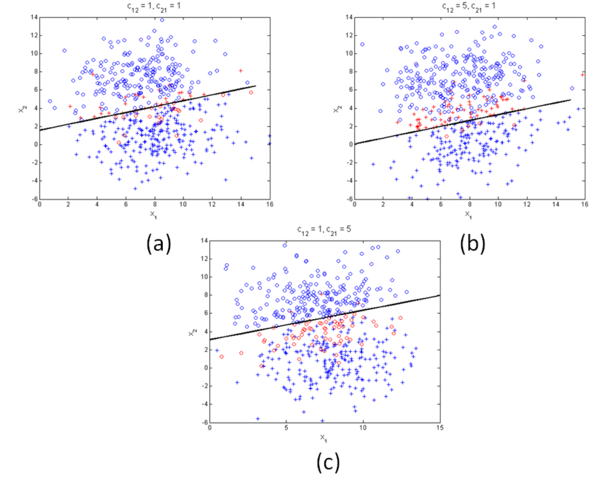Bayes Error for Minimizing Risk
Contents
Introduction
Bayes rule for minimizing risk
Example 1: 1D features
Example 2: 2D features

Fig 1: Data for class 1 (crosses) and class 2 (circles). In all cases, Prob($ \omega_1 $) = Prob($ \omega_2 $) = 0.5. Misclassified points are shown in red. Values of $ \mu_1 $, $ \mu_2 $, and $ \Sigma $ are given in Eqs. (------) - (----------). As the figures show, the separating hyperplanes shift depending on the values of $ c_{12} $ and $ c_{21} $.
Summary and Conclusions
In this lecture we have shown that the probability of error ($Prob \left[ Error \right] $) when using Bayes error, is upper bounded by the Chernoff Bound. Therefore,
for $ \beta \in \left[ 0, 1 \right] $.
When $ \beta =\frac{1}{2} $ then $ \varepsilon_{\frac{1}{2}} $ in known as the Bhattacharyya bound.
References
[1]. Duda, Richard O. and Hart, Peter E. and Stork, David G., "Pattern Classication (2nd Edition)," Wiley-Interscience, 2000.
[2]. Mireille Boutin, "ECE662: Statistical Pattern Recognition and Decision Making Processes," Purdue University, Spring 2014.
Questions and comments
If you have any questions, comments, etc. please post them On this page.

